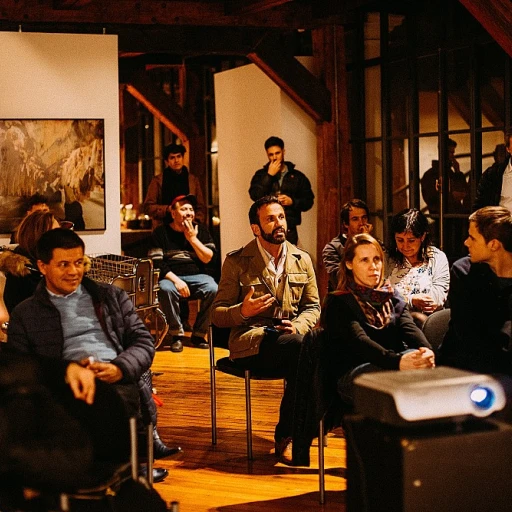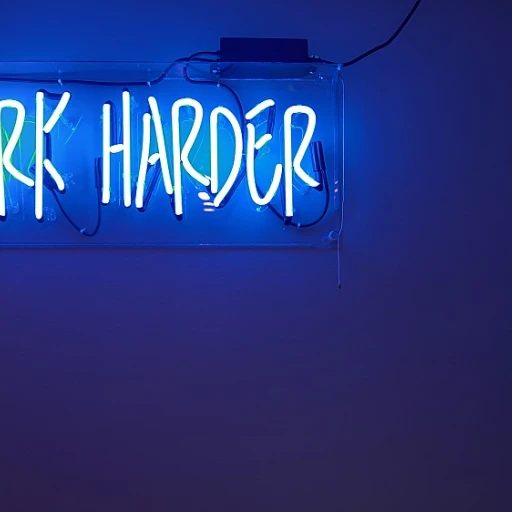The New Face of HR Leadership
Transforming Traditional Leadership Models
As the landscape of human resources evolves, so too must the leadership paradigms that guide it. Traditional HR leadership models, often hierarchical and rigid, no longer adequately serve organizations navigating the complexities of a modern workforce. The new face of HR leadership is characterized by agility, inclusivity, and a profound embrace of technology. Modern HR leaders are tasked with fostering an environment that not only recognizes the diversity and individuality of their workforce but also harnesses these traits to drive innovation and performance.
Gone are the days of one-size-fits-all leadership. Today's HR leaders are expected to be adaptable, employing various leadership styles to meet the diverse needs of their teams. Moving away from conventional management practices, they understand the importance of empathy, ethical behavior, and authenticity, creating a workplace culture grounded in trust and transparency.
Leadership as a Catalyst for Change
In the rapidly changing world of work, HR leaders are positioned as pivotal catalysts for organizational change. They play a crucial role in shaping company culture, setting the tone for how employees interact and engage with their work. This new breed of leaders is reshaping HR by redefining processes to be more employee-centric, thus ensuring that staff are not only productive but also fulfilled and motivated.
A modern HR leader must also be a visionary, looking beyond the immediate needs and foreseeing the future trends and challenges, while simultaneously balancing the current demands of talent management, employee engagement, and resource optimization. For those seeking insights into how HR leadership evolves and adapts to these changes,
leading the charge in modern HR provides a deep dive into strategies and mindsets essential for modern CHROs.
HR leadership courageously steps into the spotlight, challenging the status quo and advocating for a new narrative where human resources departments are not only operational facilitators but also strategic partners in innovation and growth. Through an empowered leadership approach, HR can seamlessly integrate with cross-functional teams, fostering collaboration and innovation at every level of the organization.
Data-Driven Insights: The Key to Effective HR Management
Harnessing the Power of Data in HR
In the evolving landscape of human resources, data-driven insights have emerged as a cornerstone of effective HR management. Leaders in the field are increasingly recognizing the value of utilizing data to make informed decisions, optimize workforce strategies, and enhance employee experiences.
With the advent of advanced technologies, HR professionals now have access to vast amounts of data, allowing them to identify patterns and predict trends that were previously elusive. This wealth of information enables leaders to tailor their approaches, ensuring that their strategies are not only innovative but also aligned with the dynamic needs of their workforce.
Moreover, integrating data analytics into HR processes can significantly improve talent acquisition and retention. By understanding candidate behavior and predicting employee turnover, organizations can fine-tune their recruitment processes and develop interventions that foster a more committed and satisfied workforce.
For those interested in learning more about the transformative role of AI and data in HR, this article on how CHROs and AI are transforming HR provides valuable insights into the integration of artificial intelligence in reshaping the human resources landscape. Embracing data-driven decision-making is not merely a trend, but rather a vital aspect of modern HR leadership that paves the way for a more efficient and adaptable organizational environment.
Fostering a Culture of Innovation
Creating an Innovative Workplace Culture
Leadership innovation in HR is not just about adopting the latest technologies or strategies; it’s about cultivating an environment where creativity and new ideas can flourish. One of the most significant steps in this direction is fostering a workplace culture that encourages innovation. This cultural shift requires leaders to inspire and empower their teams, promoting an atmosphere of trust and collaboration where employees feel safe to express their ideas and take calculated risks.
A culture of innovation can be initiated by embracing the insights gained from data-driven HR practices. These insights, as previously discussed, can provide a comprehensive view of the workforce, informing leaders of the specific needs and drivers of employee satisfaction and engagement. By understanding what motivates your team, you can create targeted initiatives that encourage innovative thinking.
An innovative culture also involves recognizing and rewarding those who pioneer new approaches and ideas. Encouragement can take the form of formal recognition programs or simply a pat on the back for a job well done. By creating visible examples of recognizing innovation, HR leaders can promote a mindset that values creative contributions.
Moreover, fostering an innovative culture is intricately linked with promoting cross-functional collaboration within the organization. When different departments come together to share perspectives, they spark new solutions that one single-function could possibly overlook. This kind of synergy not only strengthens existing processes but also inspires individuals to think outside their departmental silos.
To
foster an innovative culture through encouraging risk-taking, HR leaders should ensure that failures are treated as learning opportunities. By reframing failures and mistakes as learning experiences, employees are more likely to venture into new territories with confidence.
As organizations strive to balance work-life integration, the role of HR in supporting flexible work environments becomes crucial. These progressive environments, paired with a supportive culture, form the bedrock of a truly innovative workplace.
The journey towards a culture of innovation in HR leadership requires not just change but transformation. By championing a mindset that values and nurtures creativity, HR leaders can pave the way for a more dynamic, adaptable, and successful organizational future.
Cross-Functional Collaboration in HR
Breaking Down Silos for Enhanced HR Collaboration
In today's fast-paced professional environment, it is crucial for HR departments to break down silos and foster collaboration across different functions of the organization. Cross-functional collaboration can lead to a more holistic approach to managing human resources, which enhances both strategic decision-making and day-to-day operations.
HR leaders are increasingly recognizing the importance of building bridges with departments such as IT, finance, and marketing, to ensure that HR initiatives align with the organization's overall business strategy. This collaboration allows HR teams to gather diverse perspectives and expertise, leading to more innovative solutions to challenges such as talent acquisition, employee engagement, and performance management.
Leveraging Cross-Departmental Expertise
The cross-pollination of ideas and knowledge between departments can also foster innovation within the HR function itself. By tapping into technical insights from the IT team, HR leaders can optimize the use of HR technology, such as data analytics and machine learning, to enhance talent management processes. Similarly, collaborating with the finance team can provide HR with a better understanding of the financial implications of HR initiatives, promoting more financially sound decisions.
Furthermore, engaging with marketing departments can offer valuable insights into employer branding and employee communication strategies. This enables HR to build stronger, more persuasive narratives around company culture and values, which are crucial in attracting top talent and retaining current employees.
Cultivating a Unified Organizational Culture
A culture of collaboration not only benefits HR strategies but also contributes to a unified organizational culture. By encouraging open communication and teamwork across different functions, HR can help foster a work environment that values diversity of thought and innovation. This not only attracts creative talent but also encourages current employees to share their ideas and drive continuous improvement.
Through consistent collaboration and inclusive decision-making, HR can play a pivotal role in building an organizational culture that is both innovative and cohesive, setting the foundation for a future-ready workforce.
Balancing Work-Life: The Role of HR
Achieving Equilibrium: HR's Integral Role in Work-Life Balance
The modern workplace is a dynamic environment where achieving a harmonious work-life balance has become an essential component of employee satisfaction and productivity. As HR leadership evolves, understanding the nuances of work-life integration becomes pivotal in crafting strategies that cater to diverse workforce needs.
In the quest for a balanced professional and personal life, HR professionals are tasked with creating and maintaining policies that support flexibility, mental health, and well-being. Gone are the days when work-life balance was merely a buzzword; today, it's a vital measurement of an organization's overall health. A strong emphasis on data-driven insights, as outlined earlier, enables HR teams to understand workforce trends, tailor initiatives, and promote a healthy work-life dynamic effectively.
Furthermore, fostering a culture of innovation within HR practices supports work-life equilibrium by encouraging creative solutions for common workplace challenges. This includes reimagining work hours, incorporating flexible working arrangements, and developing robust mental health support systems. Such innovations ensure that employees remain engaged, motivated, and less prone to burnout.
Cross-functional collaboration, another critical aspect of modern HR leadership, plays a crucial role in promoting work-life balance. By partnering with different departments, HR can align organizational goals with employee satisfaction, creating cohesive strategies that benefit both the company and its workforce.
Incorporating cutting-edge technologies into HR operations provides additional tools to streamline processes and improve communication. These technologies enable real-time feedback, enhance employee interactions, and facilitate remote working solutions, further supporting the delicate balance between work and personal life.
Ultimately, as HR continues to embrace innovative approaches and future technologies, the pursuit of work-life balance remains at the forefront. Providing employees with the resources and support they need to thrive both professionally and personally will define the success of HR leadership in today's ever-evolving workplace.
The Future of HR: Embracing Cutting-Edge Technologies
Embracing Technological Advancements in HR
The rapid pace of technological innovation is reshaping the landscape of human resources, compelling HR leaders to adapt and evolve. As we've explored in previous discussions, integrating data-driven insights and fostering a culture of innovation are paramount. Building on these foundations, it's crucial for HR departments to embrace cutting-edge technologies that enhance efficiency and drive strategic outcomes.
Incorporating artificial intelligence and machine learning into HR processes allows for more efficient recruitment, enhanced employee engagement, and personalized employee development paths. AI-powered tools can sift through vast amounts of data to identify the best candidates, predict employee turnover, and recommend personalized training and development opportunities.
Moreover, leveraging cloud-based HR platforms provides the agility needed in today's fast-paced work environment. These platforms enable real-time data access, streamline workflows, and foster better collaboration across departments, addressing the need for cross-functional collaboration that we've emphasized.
Additionally, virtual and augmented reality are increasingly making their way into employee training and development programs, offering immersive learning experiences that boost retention and engagement. These technologies empower employees to learn and adapt quicker, preparing them for future challenges.
Automation of routine tasks through robotics process automation (RPA) can significantly reduce the administrative burden on HR teams, allowing them to focus more on strategic initiatives, such as enhancing the work-life balance initiatives and redefining the employee experience.
The future of HR is undoubtedly intertwined with technological advancements. By staying ahead of the curve and integrating these technologies into their frameworks, HR leaders can drive meaningful change, transforming their organizations into agile and innovative environments ready to tackle tomorrow's challenges. As we've journeyed through diverse facets of innovative HR leadership, it's clear that embracing these cutting-edge technologies is not just an option but a necessity.











